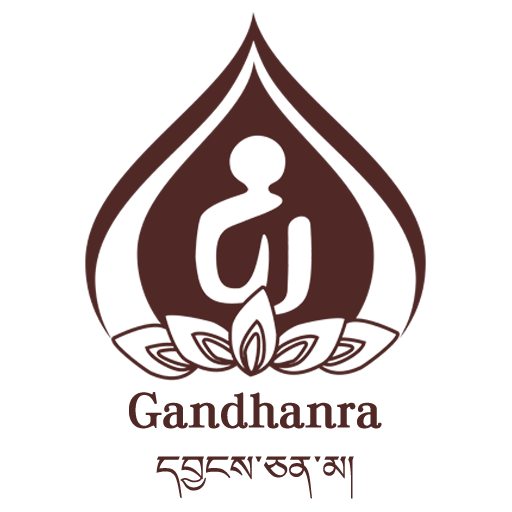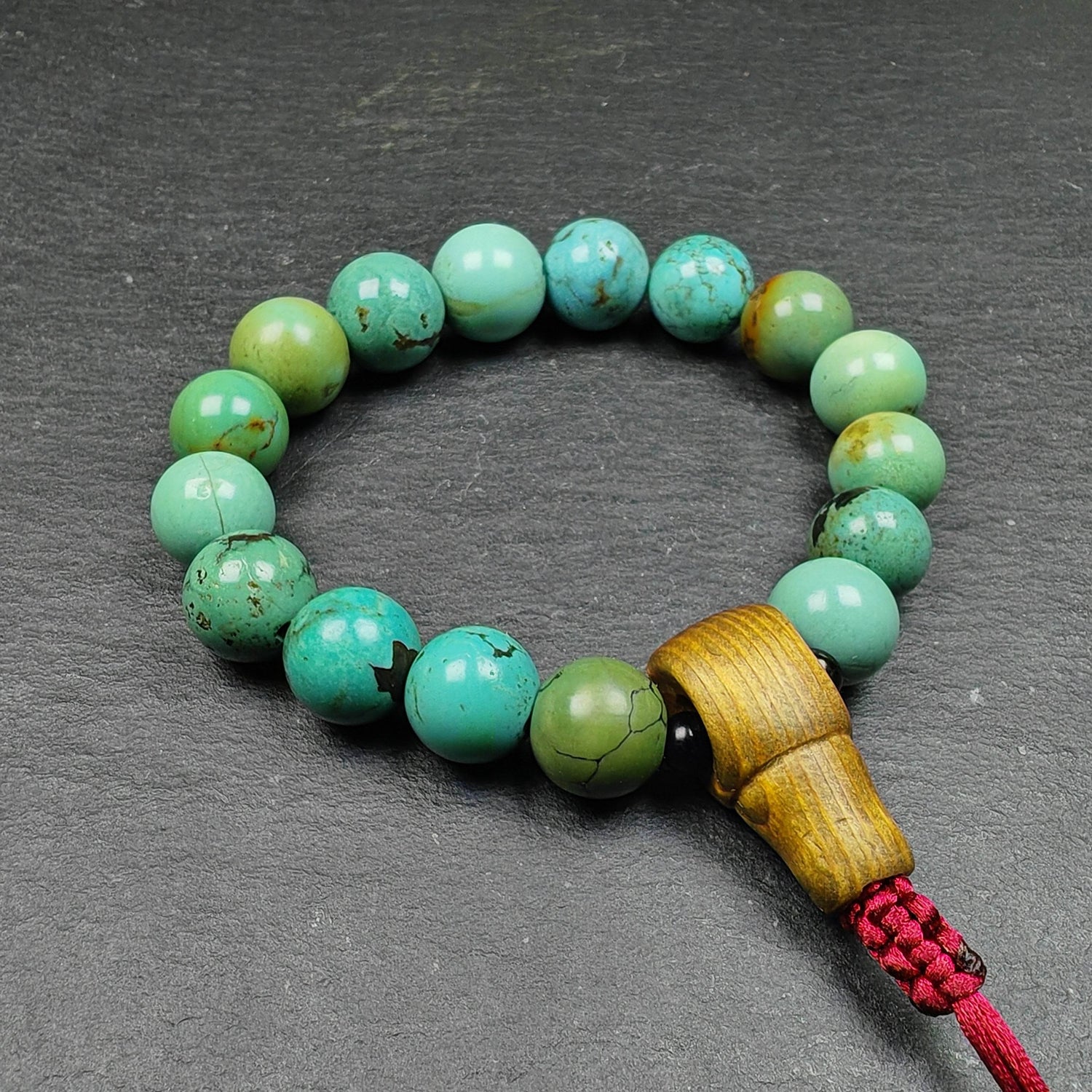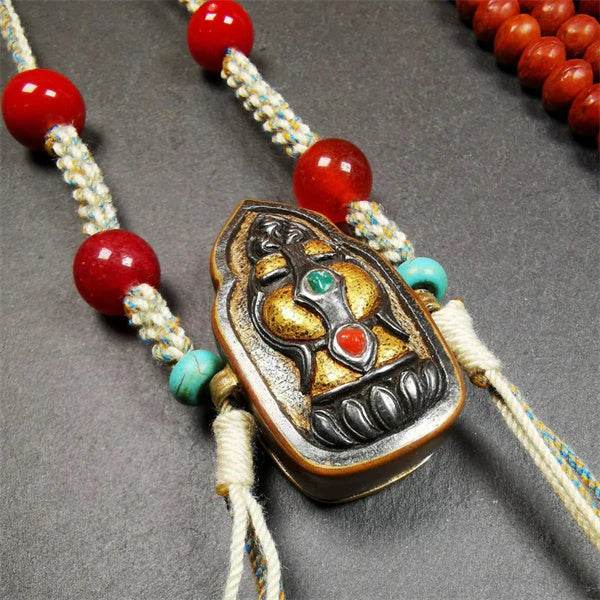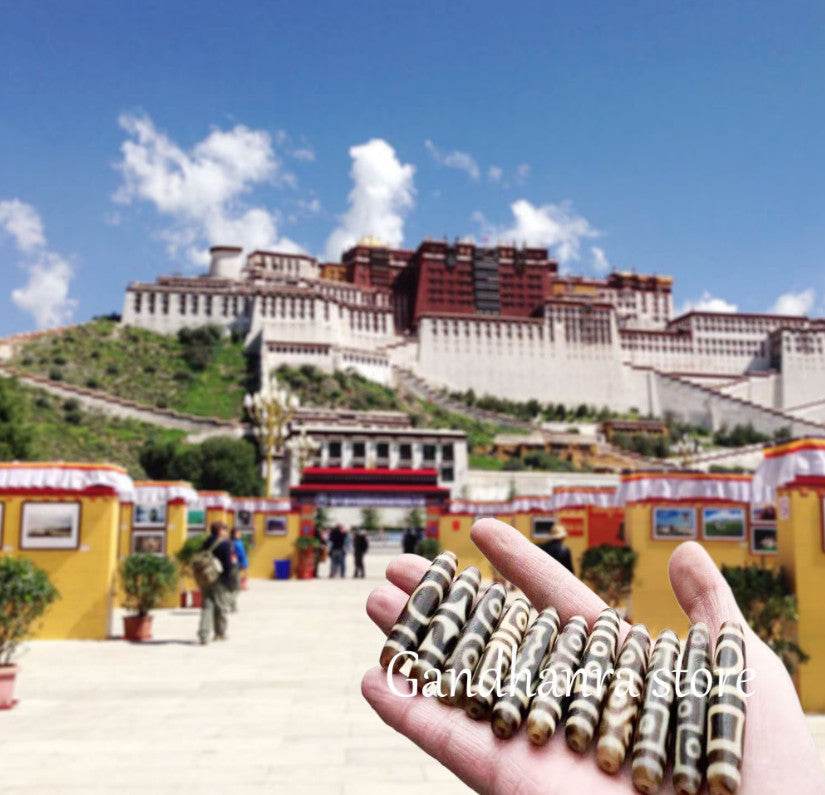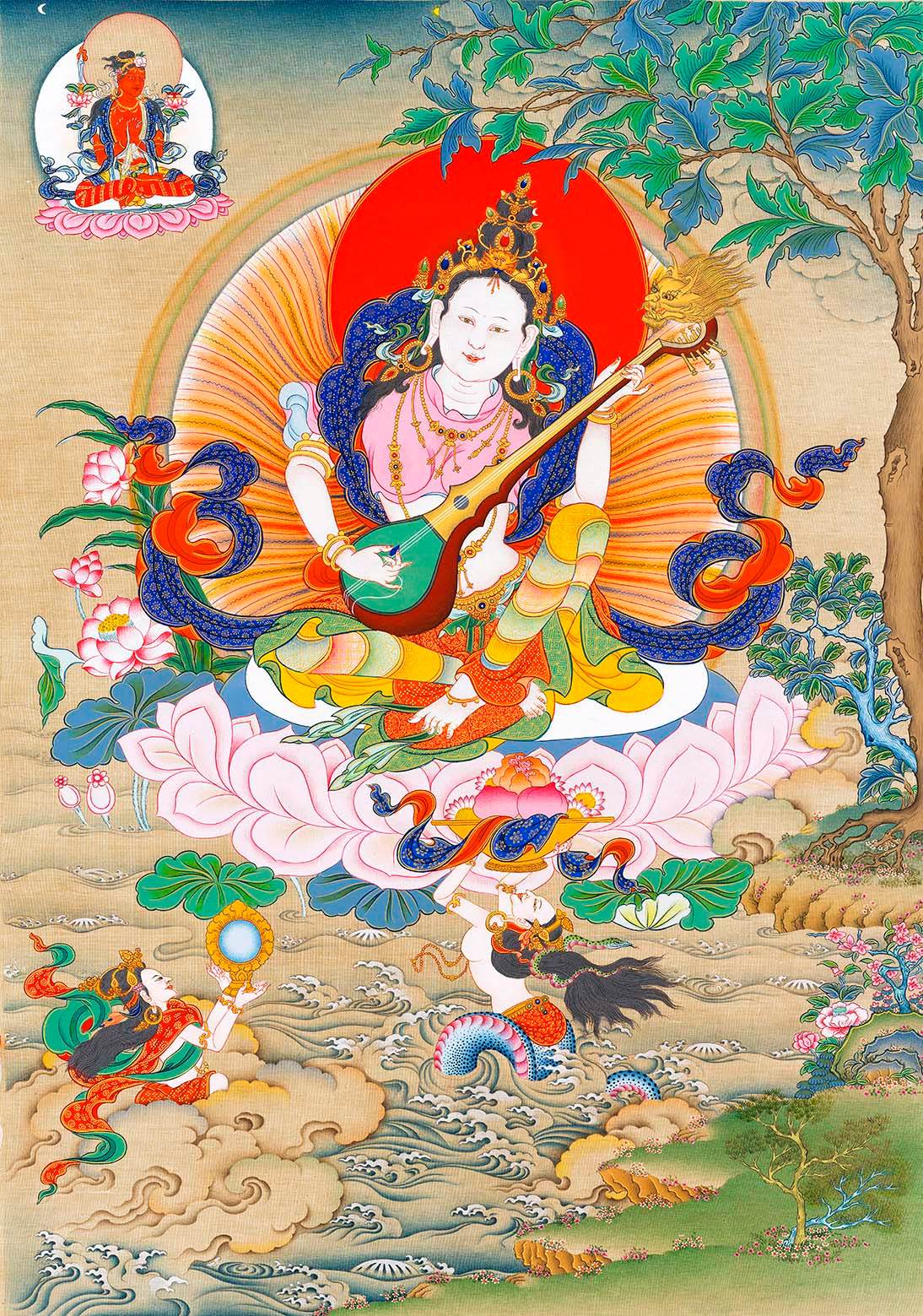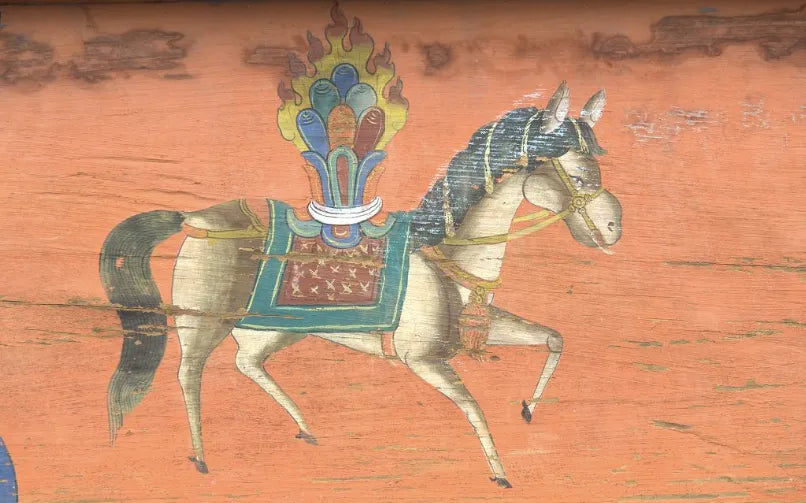
Father is a bird, mother is a monkey ▎ The origin legend of the Tibetan horse

"The Postal Horse Team Arriving in Gyangze"
Photographed by Arthur Hopkinson
1928, Collection of the British Museum
སྤུ་དཀར་དུ་བྱུང་ནའ།
ལྷ་ཡུལ་གུང་དང་གི་ནང་དུ་མཆིས་ཏེ་རྟ་ལྷའི་རྟ་སྟེ།
ཆོ་ཡང་ལྷ་རྟའི་ཆོ།འབྲང་ཡང་ལྷ་རྟའི་འབྲང་།
དོ་མའི་མྱི་རིགས་སྙིང་དགས་ཀྱི་མྱི་རིགས།
With white hair and dwelling in Lhayul Gungthang,
This kind (of horse) is a divine breed horse.
Both ancestry and bloodline belong to the divine breed horse.
The loyal horse Droma is a human breed horse.
— Excerpt from P.T. 1060 "The Classic of Horses"
- "Lhayul Gungthang" is often written as ལྷ་ཡུལ་གུང་ཐང་།.
Droma horse often refers to "horses used for sacrificial burial."
It is also translated as "loyal steed" or "desired horse."

"Heavenly Iron: Knight and Steed"
Photographed by John Vincent Bellezza
*This is a common theme in Thogchag artifacts
Some say it is related to the horse sacrifice culture in indigenous religions
Used as talismans or personal identity markers
དྲང་སྲོང་དམོད་པ་བོར་མ་ཐག།
འཕུར་བའི་གཤོག་པ་རང་སར་བྱེར།
མི་རྣམས་ཐབས་མཁས་སྣ་ཚོགས་ཀྱིས།
རྟ་རྣམས་མ་ལུས་བདག་ཏུ་བཟུང་།
Immortals cast curses,
Wings were broken henceforth.
Employing various arts,
Humans became masters of horses.
— Selected from "The Treatise on Horses: The Zur-lug-pa Tradition" (རྟ་ཡི་འབྱུང་ཁུངས་ཅོག་རོའི་ལུགས་སུ་ཡི་གེར་བྲིས་པ་)

"Door Ornament / Pillar Ornament"
Late 19th century, housed in the British Museum
*The image shows precious horses and other creatures
Often used in the protector chapels of monasteries
In the ancient Tibetan historical documents unearthed at Dunhuang, "The Genealogy of the Tsanpo," even before the descent of the first Tsanpo, Nyatri Tsenpo, the Tibetan region was described as "a vast land where swift horses could gallop." Existing archaeological discoveries (particularly the three-toed horse fossils) have confirmed that the Qinghai-Tibet Plateau is one of the important origins of horses. Noble, exceptionally gifted, astonishingly fast, and capable of galloping across the skies, these horses were not close to humans before being tamed. This aligns with the description of the "primordial horse" (emphasizing its innate wildness before domestication) in most ancient myths.

"Rock Painting: Knight and Steed"
Believed to be a work from the pre-Tibetan period
The knight wears a felt hat
Photographed by John Vincent Bellezza
In the inherent traditions of Tibet, divine horses/winged horses originally existed in the celestial realm. Their descendants descended to the mortal world, multiplied, and thus formed the earliest "earthly horses." In academic discussions on the myths of horse origins, scholars often refer to the storyline of "the differentiation between domestic and wild horses" found in the ancient Tibetan manuscript ITJ.0731. This narrative essentially serves the "horse sacrifice rituals" in indigenous religious practices. However, another myth of horse origins is recorded in equestrian texts such as "The Treatise on Horse Breeds: The Precious Garland," "The Treatise on Horses: The Clear Mirror," and "The Treatise on Horses: The Zur-lug-pa Tradition," which are believed to have been composed during the Tibetan Empire period. This myth states that the father was a bird (often described as a vulture; བྱ་རྒོད་) and the mother was a monkey. The monkey laid five eggs, from which five horses emerged.
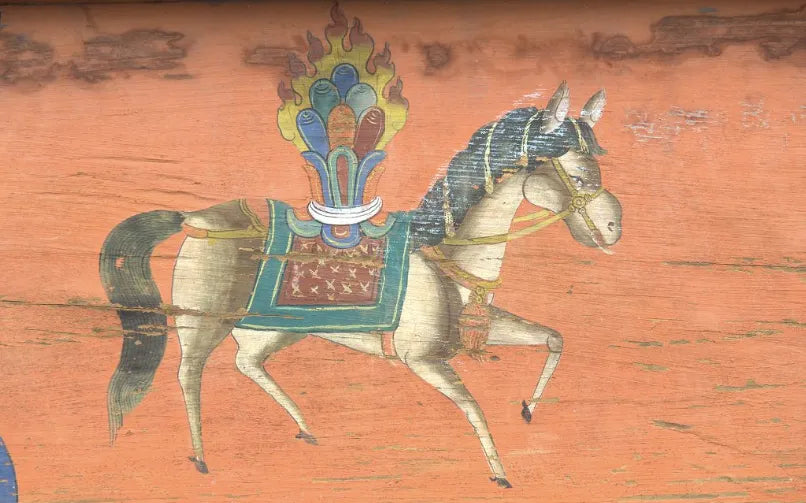
"Precious Horse Decoration on the Monastery Window Eaves"
Photographed by Markus Wild, 2011, Bhutan
Between the sacred mountains and holy lakes (some say Mount Kailash and Lake Manasarovar) there lies a lush fruit forest, where a group of monkeys lived. Among them was a particularly spirited female monkey. One day, this female monkey saw a divine bird in the sky—"white-bodied and handsome, head held high with long wings, drifting gracefully"—and fell in love at first sight, longing to unite with it. Eventually, the divine bird descended into the grass, and the celestial bird (ancestral origin) united with the virtuous monkey (bloodline) on the ground. The female monkey gave birth to five eggs (five-colored eggs). There are two rather different versions of the above storyline. In the first version, the divine bird never arrived, and the unsatisfied female monkey had to mate with a vulture.

"King Gesar"
Mid-to-late 20th century, private collection
Detail: Steed and Yak
In the second version, the divine bird that mated with the female monkey was the finest among vultures. Those familiar with Tibetan creation myths will recognize that divine birds (such as khyung birds and eagles/vultures), monkeys (such as the paternal monkey and the maternal rakshasi), and the concept of egg birth (such as the three-colored eggs) are all common elements. This combination endows the horse with a localized "demi-god" attribute. The female monkey did not know how to care for the five eggs before her and could only hide them inside the horns of wild yaks, waiting for them to hatch. This plot is extremely important—whether in the story mentioned above or in Manuscript ITJ.0731, the "origin of the feud between horses and yaks" is a key driver of the narrative.

"Equestrian Texts from the Tucci Collection"
Circa 18th century, Tucci Collection IsIAO
In the three months of autumn, the yak horn was hidden in the grass, and the eggs did not hatch.
In the three months of winter, the yak horn was hidden in a rocky nest, and the eggs did not hatch.
When spring arrived, the yak horn was hidden by the lakeshore (some say by the river), and the eggs still did not hatch.
Here, the three instances of "the eggs did not hatch" carry profound meaning, even serving as auspicious signs that later influenced horse-taming customs.
Since the eggs did not hatch in the autumn grass, it became necessary to protect pastures and gather forage in autumn.
Since the eggs did not hatch in the winter rocky nest, it became necessary to ensure the warmth of horses in winter.
Since the eggs did not hatch by the river in spring, it became necessary to protect water sources and maintain water supply in spring.
Finally, in summer, the five eggs of the female monkey hatched, the yak horn broke, and horses and yaks became enemies (རྟ་གཡག་དགྲ་གཤེད་).
It is important to note that in the ancient Tibetan manuscript ITJ.0731, the superficial reason for the feud between horses and yaks was that a wild yak killed the eldest of the "three divine horse brothers." The deeper reason was the competition between horses and yaks for pastures and water sources.
To seek revenge, the youngest of the three brothers formed an alliance with humans: "In life, I carry you; after death, I transport you to the underworld."
From this point on, the youngest, who allied with humans, became the ancestor of domestic horses, while the second brother, who remained uninvolved, became the ancestor of wild horses.

"Wall Painting in Qutan Monastery: Father Monkey and Mother Ogress"
Photographed by Gyayé Trabho, 2011
At this point, another main character in the story appears: the sage (དྲང་སྲོང་།; ऋषि) practicing asceticism in the mountains. This "sage" can naturally be equated with the sages/saints of South Asian tradition. However, in similar texts from western Tibet, the character who appears here is actually an "old man" (རྒན་པོ་). Considering what we discussed in the previous article (General Introduction), it is highly likely that this "sage" is a product of the gradual influence of South Asian horse studies (especially the "Shalihotra Samhita") on Tibet starting from the 11th century. The subsequent story holds tragic implications for the newly hatched divine horses, all stemming from the curse of the forest sage.

"Tsakali: The Medical Sage Yutok Heart Essence"
Mid to late 19th century, Shechen Archives collection
